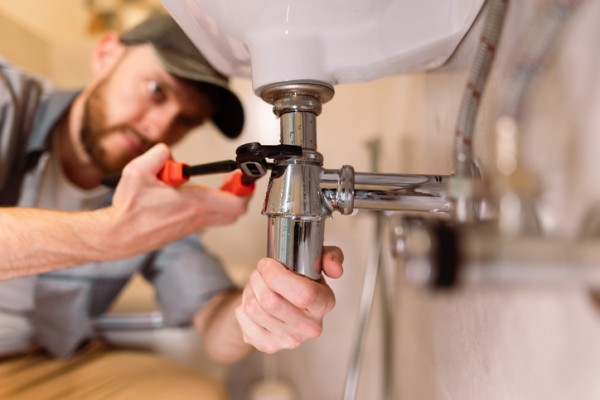AS/NZS 3500 and what it means for you

The AS/NZS 3500 standard has received a facelift. Sean Carroll explores what the changes mean for the industry and the plumbers on the tools.
A lot of the changes in AS/NZS 3500 Plumbing and Drainage Standards are minor, sometimes only clerical, but they are changes nonetheless, and it’s important that plumbing professionals are aware of what’s different.
The WS-014 Technical Committee is responsible for updating AS/NZ 3500, and committee chair Tom Roberts, says that a lot of the changes were made following extensive research and international experiences.
“The key driver for change for this edition of the Standard was following industry feedback and project proposals,” he says.
“The vast majority of the changes in the 2025 edition of AS/NZS 3500 are focused on ensuring that the Standard keeps pace with common industry practices and provides clear, minimum necessary provisions to ensure that plumbing and drainage systems continue to protect the health and safety of the community.”
He adds that there’s a strong desire from industry that once these methods become common practice, the Standard could provide a solution and the practice be considered deemed-to-satisfy with the Australian and New Zealand codes.
The updated standards reflect advancements in plumbing technology, safety measures and environmental considerations. Some notable changes include:
Flexible hose assemblies
Flexible hoses bursting is unfortunately not uncommon across Australia and New Zealand, with several issues often resulting in their premature failure.
New requirements have been included for specific categories of flexible hoses to be used in particular scenarios, such as submerged, cold water or heated water applications. These hose categorisations align with the product specification AS 3499 Water supply – Flexible hose assemblies, which separates hoses into four classifications.
There is also a new requirement for isolation valves to be used prior to the connection to taps and mixers with flexible hoses.
Backflow prevention
There have been some minor changes relating to atmospheric vacuum breakers (AVB) to align with international practice and the latest edition of AS/NZS 2845.3:2020 Water supply – Backflow prevention devices, Part 3: Field testing and maintenance of testable devices.
These changes amend the categorisation of these devices from non-testable to testable and allow their use in high-hazard applications. AVBs are now an option that can provide a cost-effective solution for backflow prevention.
Waterless urinals
After many years of research, new provisions for waterless urinals have been developed and included in the 2025 revision.
These new provisions seek to reduce the likelihood of struvite buildup within the sanitary drainage system by providing a number of design options to flush the system (not the urinal) during normal operation.
Stormwater drainage
Updates to the design provisions for eaves gutter overflow and valley gutter design have been included in AS/NZS 3500.3.
Polyethylene pipes in northern Australia
Whilst polyethylene water pipes can provide a great option, some concerns have been raised where this type of pipe is used in areas where there is a combination of pH levels, high temperatures and water chemistry (such as chlorination rates).
To ensure that practitioners can choose the right product for the right application, a new appendix was included on this subject, applying to a limited number of discrete geographical regions in Australia.
Vacuum drainage
Polypropylene pipes and fittings have been listed as a new, optional material for vacuum drainage systems, providing practitioners with additional material choice.
Miscellaneous appliances
To ensure that the standards can keep pace with the rapid rate of innovation for water-using or waste-discharging appliances, new general provisions have been included to ensure all the appropriate considerations are made to accommodate the connections from an appliance to the water service or to discharge to the sanitary drainage or stormwater systems.
Multi-building developments
To provide greater clarity on the sanitary drainage provisions applying to systems with three or more residential buildings. These amendments focus on the provision of inspection and maintenance shafts, drainage system ventilation and appropriate protection from sewage surcharge and overflow from blockages.
Rainwater harvesting
Whilst the installation of rainwater harvesting systems has been common practice in Australia and New Zealand for many years, there have never been clear Deemed-to-Satisfy provisions included in AS/NZS 3500.
Tank design and installation provisions have been included in AS/NZS 3500.1, and rainwater harvesting provisions, including charged systems in AS/NZS 3500.3. These provisions are applicable in New Zealand only; however, Australian practitioners can use these provisions through a Performance Solution in accordance with the National Construction Code (NCC).
Next steps for plumbing professionals
It is recommended that practitioners become familiar with the changes across the AS/NZS 3500:2025 suite and are aware of the adoption dates in the relevant jurisdiction.
Tom adds that there’s much more work to be done: “A significant amount of work has been put into the publication by all of the committee members on WS-014. It’s fantastic to see the amount of innovation happening in the plumbing and drainage industry, and we are seeking several project proposals being submitted by the industry, and I see some exciting focus areas for the next revision.”
These Standards are now available through Standards Australia publishers.
